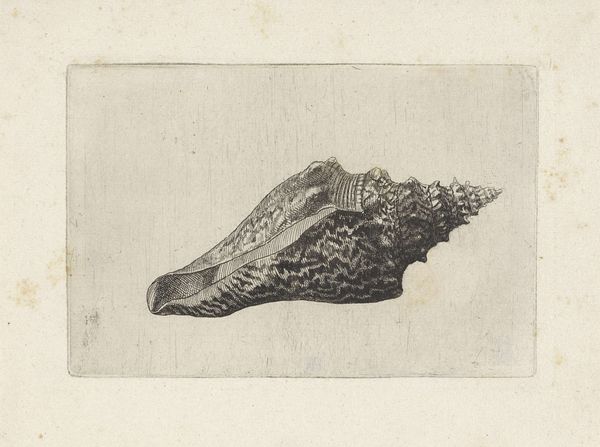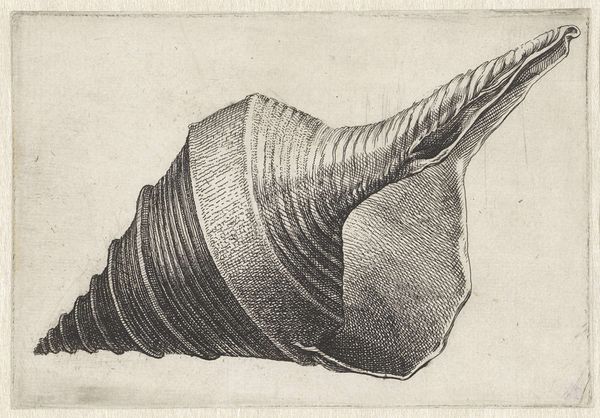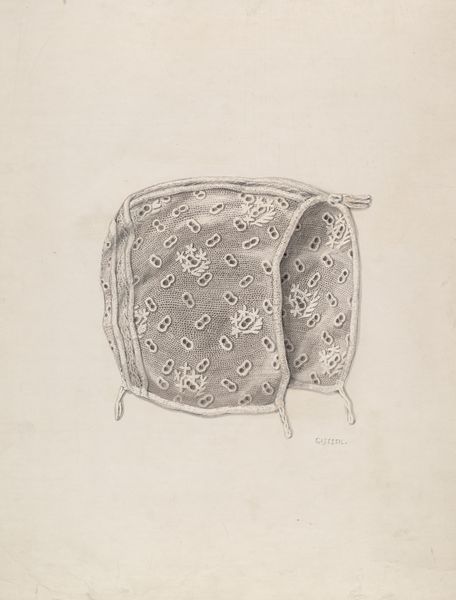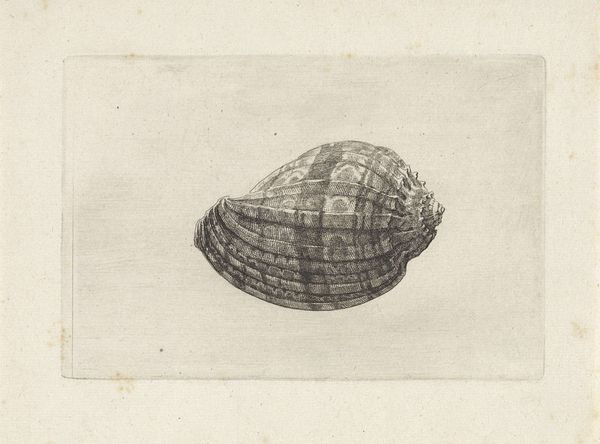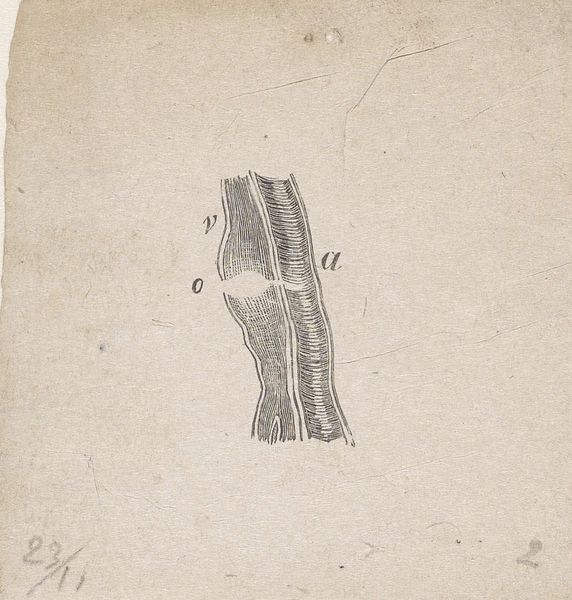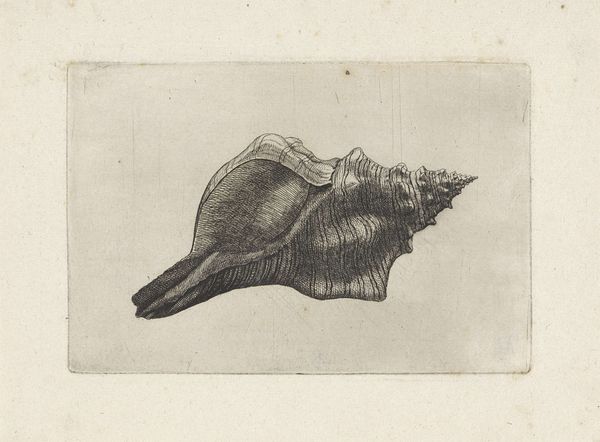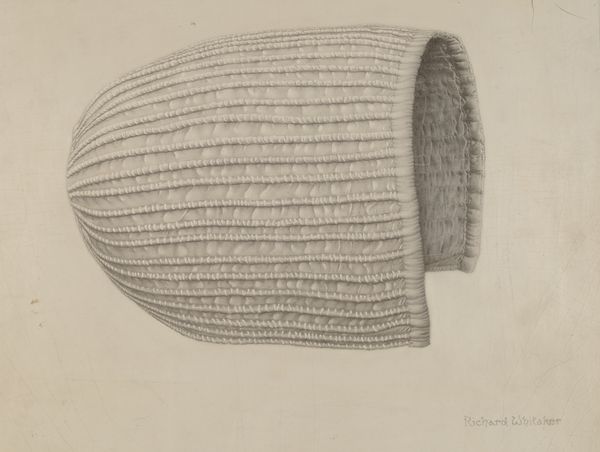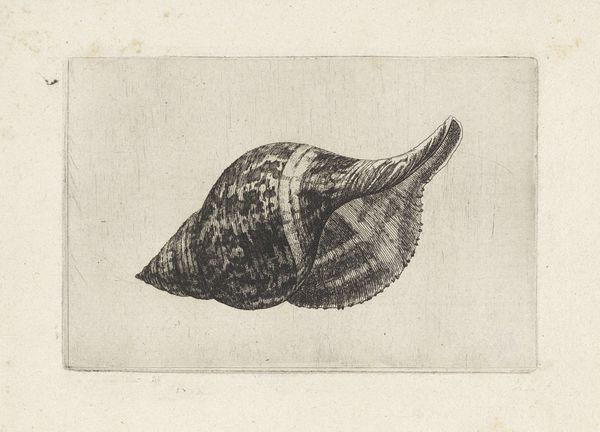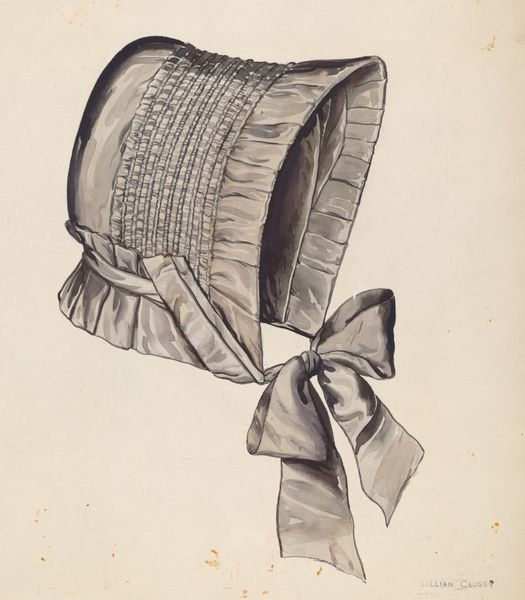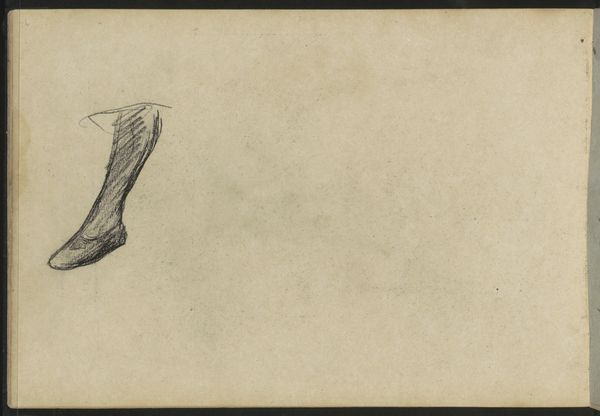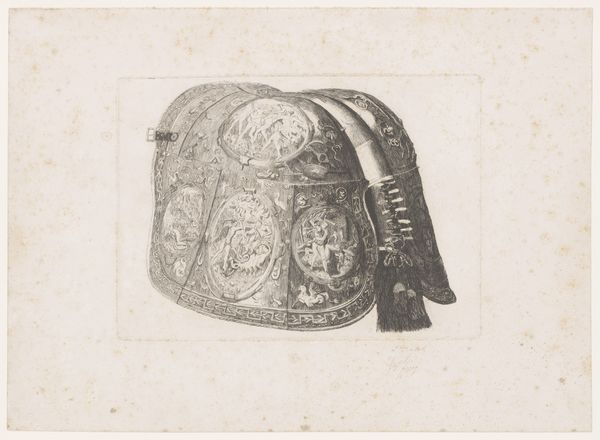
print, engraving
#
baroque
# print
#
old engraving style
#
engraving
Dimensions: height 98 mm, width 135 mm
Copyright: Rijks Museum: Open Domain
Curator: Here we have Wenceslaus Hollar’s engraving, "Schelp, conus imperialis", dating back to somewhere between 1644 and 1652. The artwork is part of the Rijksmuseum collection. What's your initial impression? Editor: Striking, isn't it? The precision is captivating. But it feels isolated somehow, like a specimen pinned for examination, yet exquisitely rendered in this formal presentation. Curator: Hollar’s masterful control of the engraving technique certainly lends itself to that clinical observation. Look closely at how the hatching and cross-hatching articulate the volume and texture of the shell. He clearly understood not only the form but also the material essence. Editor: I’m drawn to thinking about the laborious process of crafting an image with such meticulous detail. Each line etched, each mark deliberate—the labor involved is almost unfathomable in our current age of digital reproduction. Who commissioned such works? What function did these prints serve, circulating these images of rare and exotic shells? Curator: Indeed. Its intricate surface displays a calculated harmony between shadow and light. Notice the rhythm in the arrangement of the shell’s spots and ridges and the way Hollar manipulates positive and negative space. The visual language employed here is very sophisticated for a scientific depiction. Editor: The very choice of the 'conus imperialis', isn’t arbitrary. These shells, gathered from faraway shores, become commodities and markers of power. Think about the sailors, traders, and artisans involved in bringing these objects and their images to a European audience. The engraving is more than just a record; it's evidence of the systems that allowed its creation and circulation. Curator: I concede. The print participates in a larger network. But viewing it primarily as a social artifact risks overlooking its aesthetic achievement. Ultimately, this engraving strikes me as more than just an efficient form of documentation; the work represents a moment of near-perfect visual equilibrium, elevating what may appear commonplace into the realm of fine art. Editor: Well, maybe there isn't as much separation as you think. Appreciating its fine points and artistic aspects doesn’t remove our appreciation of labor and resources used in art production, and I feel we're looking at both its scientific appeal and the complicated supply chain it sits in. It seems we both came to appreciate a shell today.
Comments
No comments
Be the first to comment and join the conversation on the ultimate creative platform.

